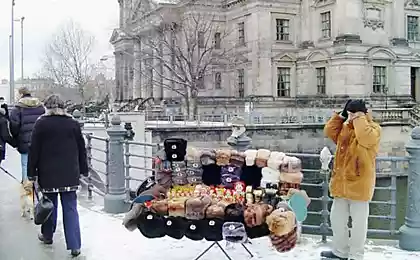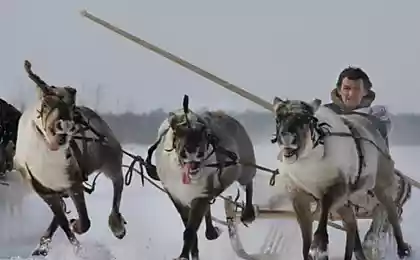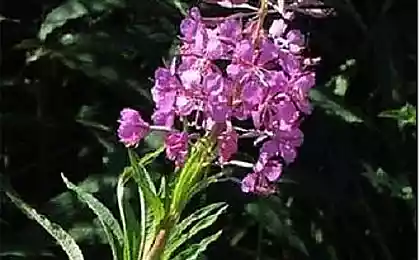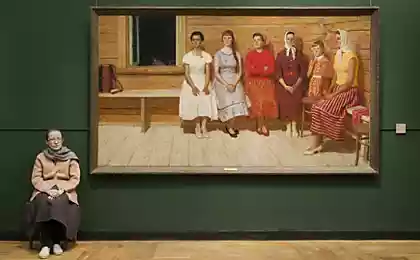1076
Russian restaurant
31 photo + a lot of text.
Modern restaurants are the heirs of Russian restaurants. The first public drinking establishments in St.Petersburg with the birth of the city on the Neva.
Creating in the years 1749-1751 a detailed description of the young Russian capital A.I.Bogdanov reminded that "from the very first years here, when the kingdom of St. Petersburg were built two drinking noble houses, which are sold in various state-owned drinks of different flavors of vodka for the road selling noble people ... "One of them - particularly revered and visited by Peter I -« Avsteria on Sanktpeterburgskoy Party at Trinity wharf at the Petrovsky bridge. " On holidays Tsar Peter appeared in it "with notable personalities and ministers, before lunch on the glass of votki."

The second "Avsteria Sanktpeterburgskom on the same island, in bolshii Nikolskoy street built of daub and wattle, in 1719, the year." These were places for highborn ladies.

There are other attractive places. For example, "taverns or drinking houses, which are sold in shallow cups wine, vodka, beer and honey for podlago people."
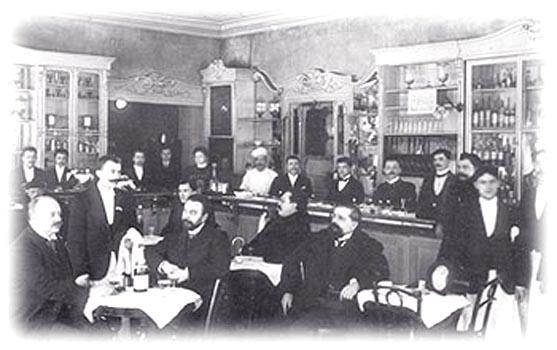
In the years 1750-1751 in the city was 121 tavern. They are located very unevenly. On the island of Saint-Petersburg - 30 taverns, on the Admiralty side - 48 taverns on Foundry side - 19 taverns, in the Vyborg district - only 10 taverns, and on Vasilevsky Island - 14 taverns.
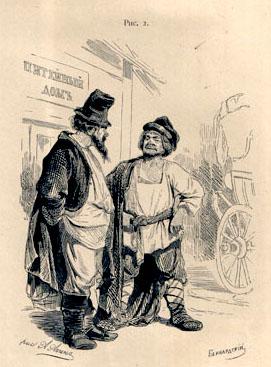
First, drinking houses were farmed out to local merchants. This led to many abuses. Peter I decided to find a more worthy rulers. I tried to appoint merchants of visitors, then - identified Tselovalnik (ie owners and tenants taverns) splitters and bearded men (because they were stubborn and fight for their faith), but settled on retired soldiers and non-commissioned officers. After the death of Peter I in the fight for victory again taverns local merchants.
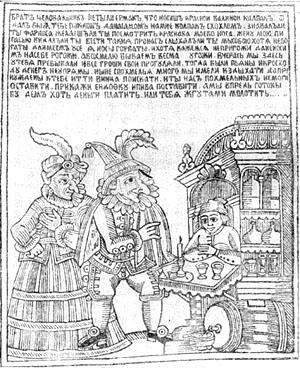
During the time of Peter I came and restaurants or "tavern Palaces", which sold grape wines, French brandy, beer. The restaurants were pool tables. The first "House Tavern" was built in 1720 at the Trinity Wharf near the Peter and Paul Fortress, and haunted by the king.
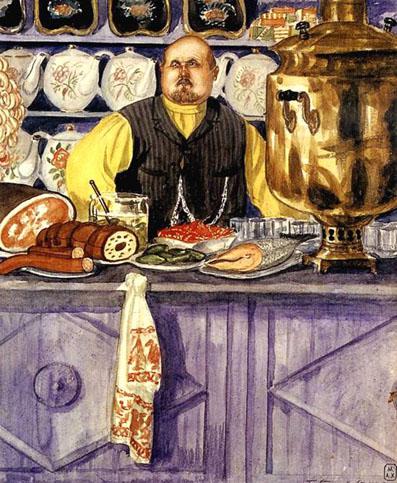
But after 20 years in restaurants was banned the sale of vodka and beer and a game of billiards. The restaurants was served only grape wine and cuisine. Instead of the "tavern houses" were allowed drinking cellar with overseas grape wines. By 1750, these cellars in the city there were already 65.
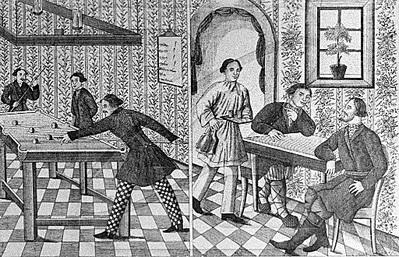
Eating can be in numerous taverns and "Tavern Meals" (special homes for foreign cuisine).
The first hotel - "Inns" appeared in 1723 on the island of St. Petersburg near future Petrovsky quay side and Foundry. But it is not accustomed. More fortunate the Post court on Admiralty side, which is located near the Summer Garden near the ferry pier on the Trinity. It was built in 1714, many times visited the king and served as the venue for the festivities - "viktoriyalnyh celebrations."
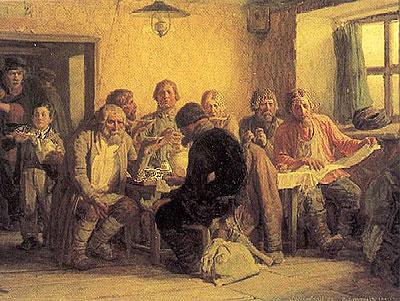
By the early nineteenth century in St. Petersburg began to spread the restaurant, cafes, restaurants, taverns. Increasingly restaurants play a role not only pubs, but also accommodation for visitors. It was the prototype of modern hotels with restaurants. Most large restaurants - restaurants Demuth, "Bordeaux", "Nord" had "quite decent" furnished room.
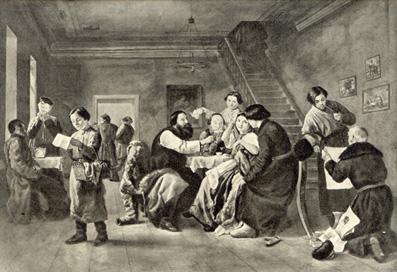
Petersburg cafe at the time - it's facilities for the common people, for artisans, workers, people from the lower classes. According G.T.Fabera traveler, who visited St. Petersburg in 1811, "institution called St. Petersburg cafe, unworthy of the name."
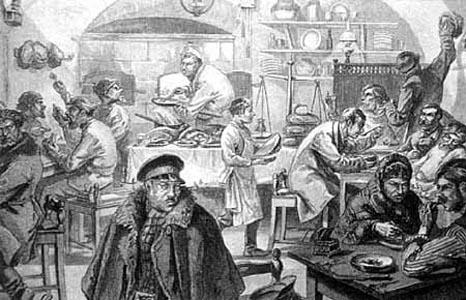
Hospitality appeared in St. Petersburg in the late XVIII century. The first restaurateurs in St. Petersburg were French. The revolutionary events of 1789 forced many French people to emigrate to Russia, primarily in the capital city on the Neva. Among them were cooks, and cooks, and bakers. Under the northern sky they continued a usual thing, to the obvious delight of the "golden" capital of young people and foreigners. Many of them opened the restaurant and coffee house. The predominance of the French lines in the restaurant business felt until the middle of the nineteenth century.
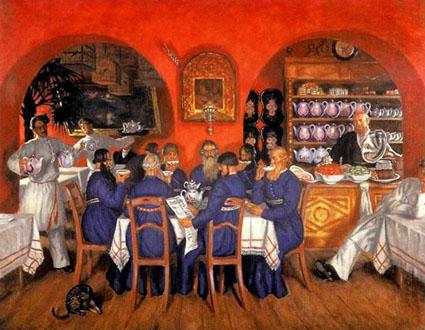
Most impressive was the restaurant that was "better than Paris." They cost 3-4 rubles lunch, served liquor and wine, Tokaj, brandy, kirsch. Strong drinks in the restaurant was not. Many memoirs of eyewitnesses recalled with delight the popular dishes - steaks, pasta, steaks. In the first decades of the century, the restaurant HOH worked only in the morning and in the afternoon. Dinner and night events was not. Regulars restaurants of the evening went to visit friends and relatives. Therefore, at even restaurants of rooms were closed. Restaurants of the visitors were young rich, Guard officers, foreign travelers, not yet accustomed to Russian cuisine and Russian service. Most famous were the restaurant Tardif, Packer, Aimee.
According to the Main Police (she did then statistics), in 1814 in the Russian capital was home 2 coffee (cafe), 26 restaurants, 22 gerberha, pastry cook 67 tables, 35 pubs, drinking 109 houses, 259 cellars Rennes. Noted yet Hospitality, they were still a novelty, were not included in the Petersburg-established usage. But on Feb. 2, 1821 Emperor Alexander I «Highest approved the" Regulations on the hotels, the restaurant, coffee houses, restaurants and inns in St. Petersburg and Moscow. " These are five different types of institutions were allowed to organize in St. Petersburg and the First Throne. On the situation in the Russian capital is not limited number of hotels, Hospitality, coffee houses and taverns. Taking into account a state monopoly on spirits, under the strict control of the sovereign's restaurants were, where (and only them!) Were allowed to sell beer, porter, grape wine, and the sweet and bitter vodka. The restaurant quickly gained public recognition. Then, on the banks of the Neva were popular as some of the restaurant, and the restaurant at hotels. Their owners usually were foreigners: the French Dume, Talon, Saint-Georges, Diamond, Simon Grand-Jean, pendant, and Alexander Heyd Italians, Germans Clay, Otto.
1835 was a landmark in the history of the restaurant business. February 6, 1835 Nicholas 1 approved the new "Regulations on the tavern establishments in St. Petersburg" .Restoratsii, hotels, coffee houses, restaurants and taverns have been allocated in the "tavern places" with special rules of work. For the sale of drinks also determined cellars, shops and stores with the right cellars. Introduced stringent quantitative restrictions. In St. Petersburg, allowed to place only 35 restaurants of 46 coffee houses 40 restaurants and 50 taverns. A cellar - 250 shops and stores with the right cellars - 20. Moreover, each of the parts of the city (the modern - in areas) are allowed to have a certain number of restaurants.
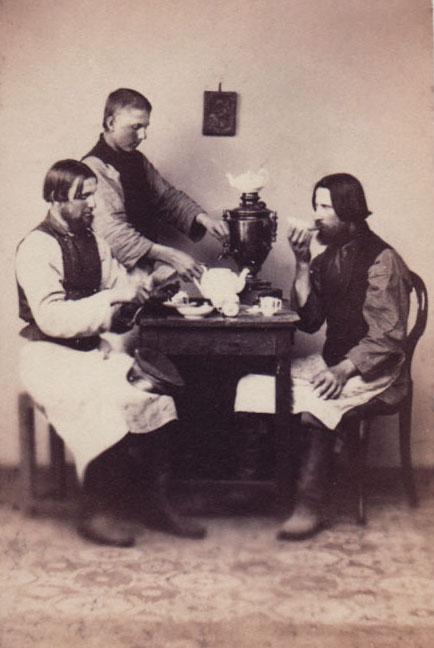
Intensive trade, of course, demanded repose merchant forces and capabilities with the use of money to spend - all this contributed to very precisely restaurants. Equally necessary are restaurants and hotels as the beginning of the nineteenth century. The restaurant and the coffee house had a more refined character. In accordance with the position in the restaurant was allowed to keep the table (for the organization of the lunch and breakfast visitors), to submit "to the table" grape wine, sweet vodka, liqueurs, beer, porter, honey, coffee, tea, selling smoking tobacco. The coffee houses were supposed to offer ice cream, lemonade, orgeat, coffee, chocolate and smoking tobacco, all kinds of candy, fruit, jam, biscuits, sweets, jelly, candy, syrups, liqueurs. The inns are allowed to "contain vital supplies, boiled, baked and fried, used by people nizshago class." Drinks, kvass and allowed "sour soup". The restaurants are allowed to "keep the table, tea, coffee and kuritelnago tobacco, sale of wines, vodka of foreign and Russian vsyakago kind of rum, arrack, Shroma, brandy, liqueurs, punch, all vodkas bread, manufactured in the Distillery also rum and vodka in the manner of the French, legkago polpiva, honey, beer and porter. " Only allowed in restaurants have tables for the game of billiards, "but no more than three in every restaurant."
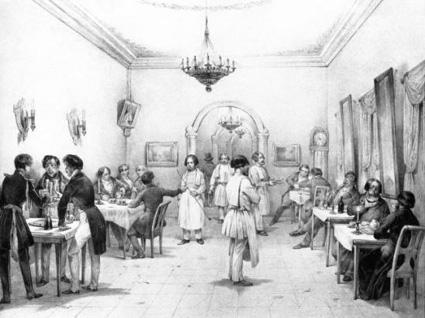
In the first half of the nineteenth century the favorite places "fashionable dandy," the young aristocrats were restaurants, which owned Dyuli, Borel, Dussault. It came carousing, and sometimes "naughty." In Fele, Saint-Georges met people of high society, senior officials, ministers, diplomats - especially in the summer when the family left in the garden.
Restaurants in the modern sense appeared after the initiative "master confectioner shop" Dominique Ritz Aporta. At his suggestion, after consideration by the State Council of 11 April 1841 established a new tavern Highest institution "called café-restaurant." This new type of institution united characteristics of restaurants, coffee houses and restaurants of. The "cafe-restaurant" allowed to serve and sell:
"1). Vsyakago kind of refreshing, as well as tea, coffee, shekolad, mulled wine, etc. sabanon 2). Different sweets and cakes. 3). Broth, steak and other supplies need for snacks. 4). Other liqueurs, cordials, wine and Russian inostrannyya best goodness, porter, foreign and Russian beer best goodness. 5). Tobacco and cigars. It allows you to have in the institution: 1). All go out, both Russian and inostrannyya newspaper dozvolennyya government and 2). Billiards, bowling, dominoes and chess ».
The new institution introduced new rules of service. Tea, coffee and similar drinks had not fed in portions (as previously in restaurants), but in cups and glasses. Liquor and wine - in a wine glasses and glasses and champagne and porter - in bottles and polubutylkah. The first such café-restaurant Dominique Ritz Aporta appeared on Nevsky Prospekt, in the house of the Lutheran Church of Peter and Paul, it was called, of course - "Dominique." He immediately became popular, especially among not very wealthy citizens, students and players. They wrote that by the middle of the day from the influx of guest rooms seemed to be in a fog because fills them with smoke and steam. It is estimated that on average each of the "Dominican" - the so-called regulars institutions - leaving here 40 kopecks. Equally popular was "Milbert" reasonable prices which explains the enormous number of visitors.

17
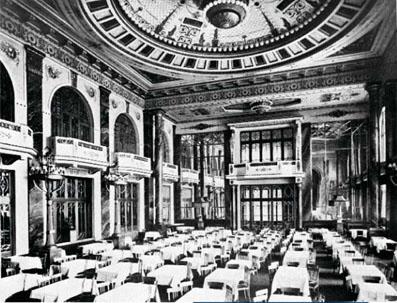
Three of the restaurant "El Dorado" in Moscow in Petrovsky Park
Number of restaurants constantly growing - along with the increase in population of the city, the development of business and public life, commercial and industrial activities. At the end of the nineteenth century there were about 60, in 1911 - more than 100 (not counting those that were held at railway stations, at clubs and hotels).
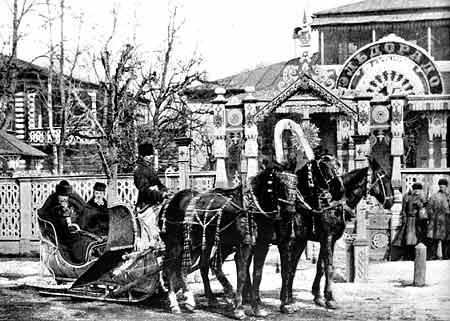
There were restaurants, especially favorite to any particular category of the capital's residents. In those years, one of the most luxurious and expensive restaurants treated "Pivato Brothers", "The Bear", "Contant". In the latter in 1916 it was organized a diplomatic reception in honor of the 25th anniversary of the Franco-Russian alliance agreement.
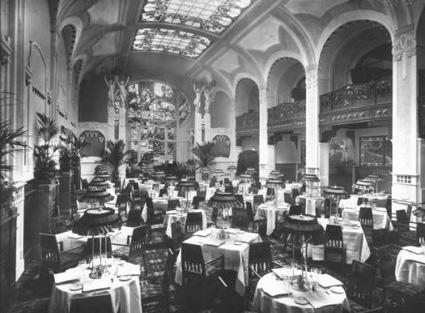
Lunch French guests, the Moscow City Duma in the restaurant Great Moscow hotel. 1912
In the capital there are several restaurants under the name "Exchange". Already the name indicating that sat at his table, not only for dining but also for trade negotiations. These restaurants are located in parts of the city, where intense commercial activity was in full swing.
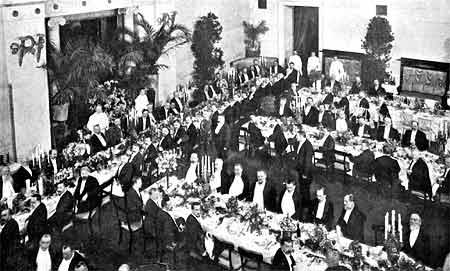
For merchants, primarily designed restaurant "Mariinsky" and "Merchant", located next to the Apraksin Dvor. The largest of them, and the most authoritative - "Kuba", located on Bolshaya Morskaya Street, close to the largest banks, has become a sort of unofficial exchange for the elite. Representatives of the business elite meet here to negotiate and conclude deals. For these business and social meetings in a more or less narrow range, many restaurants have, along with the basic facilities, so-called cabinets. The first offices were in St. Petersburg in mid-nineteenth century.
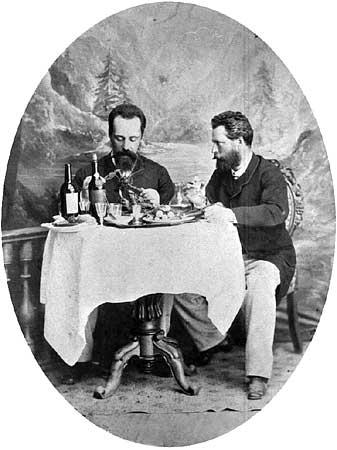
Actors, directors, theater critics often gathered at Zist nearby Alexandrinka. Often - at Litnera. At the same time writers have been very popular lunch, holds regular editorial staff of the largest magazines.
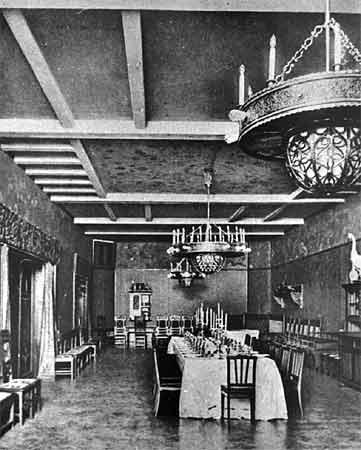
Especially festive events, anniversaries celebrated in the "Kontane." Many visitors were in the "Small Yaroslavets", "Vienna". Among the restaurants in St. Petersburg were those where not only celebrated, dinner, dinner, exchanged news, rumors and impressions about what they see and read, but ... you can almost say lived - spend many hours writing and even ... sleep. This was the restaurant Davidov. He was loved, it seemed contrary to common sense. It did not spoil its customers with culinary delights. Over a glass of vodka, followed by a piece of salted fish with bread or fried sausages with mashed potatoes. It's amazing that this place was called a restaurant. But apparently, in an incredibly motley audience, totally relaxed atmosphere lurked something more attractive than respectability and good food.
The students, who were especially numerous on Vasilyevsky Island, went to the inexpensive "Bernhard", "London" to "Tikhonov", "Gade". These "ekspromtnye revelry were mostly modest: Drink 1 bottle of red wine for two or 2-3 bottles of beer, and friends peacefully dispersed with little noise in my head." In these institutions could play billiards, to celebrate the end of the school year.
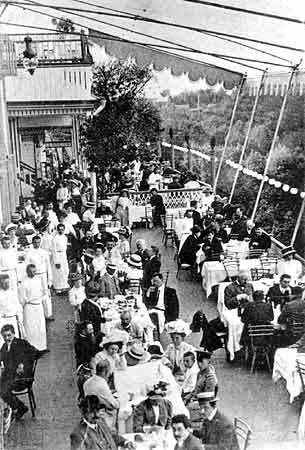
There were restaurants in the capital and who had a certain 'national orientation. " Already mentioned the restaurant Leiner was especially fond of St. Petersburg Germans - more or less wealthy. Those that have more modest wealth, went to places like restaurant Heyden. There could be a cheap - while good - dinner, to sit, to see friends. Restaurant Gade, was said to have appeared to the club - here everyone knew each other. Mainly for the Germans in the summer I worked "Bavaria" - open air restaurant at the amusement garden on Petrovsky Island.
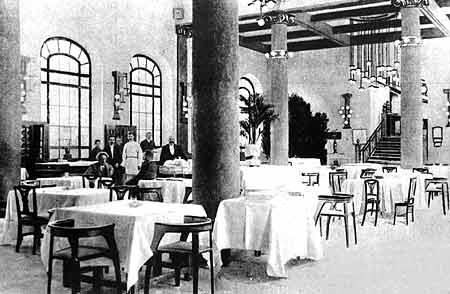
St. Petersburg restaurant offers an extensive menu, an extensive selection of wines, vodkas, liqueurs, cordials. To do this, they had every opportunity - in fact from different parts of Russia's capital were taken meat, poultry and game, butter and eggs, eggs and fish, including live. Many restaurants have special pools, where it is kept before being sent to the plate. Petersburg gardeners almost the whole year supply fresh greens and vegetables - cucumbers, green peas, green beans, cauliflower, asparagus and mushrooms, strawberries and other berries. Do not stand aside and St. Petersburg businessman, the Copts ham, beef tongue, fish, and also produces canned vegetables, berry juices, a variety of pastries. Numerous bakeries provide the city with bread, muffins, pies, pastries, cakes. From abroad carried ham and salami, oysters, lobster, sardines, cheeses, fruit and, of course, wine. It came from France, Spain, Italy.
Over time, in southern Russia has been produced a lot of good wine, which significantly pushed the import. Famous spirits producers Petersburg - vodka, liqueurs. The great demand and popularity enjoyed beer.
All this abundance and went to restaurants. Initially, visitors find them primarily serves French cuisine. Several less offers Italian dishes. Fans of the eastern exotic could find in a restaurant and now familiar kebab, pilaf, ase, barbecue. The first attempts to open a Russian restaurant were unsuccessful, but soon they are still there and have gained popularity. Superiority of them belonged to the restaurant Palkin, who was called the king of Russian cuisine. We loved and eagerly visited "Small Yaroslavets." Here you can get sterlet ear villager, pies and pie, Guriev porridge, cutlets grouse, Chinen turnip pig with horseradish, mutton side with buckwheat ... An elderly Frenchman who left Paris in connection with the revolutionary events of 1871, sitting on such "Russian lunch", used to say: "From Versailles to escape, but how to escape from the piglet and lamb?»
Of course, a hearty meal accompanied by alcohol. The best restaurants wine list contains up to a hundred titles. Some were famous also for its specific drinks. In "Dominica" it was zhzhenka in "Vienna" - cold punch with ice ("Vienna").
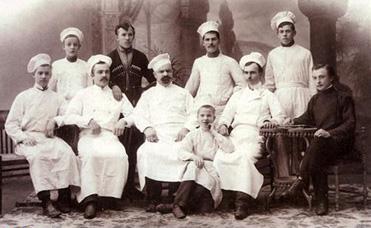
Cook Moscow restaurant
A good cook - the first condition of success. He and the maitre d 'was "commanders in chief" in the restaurant. But it is necessary and good "army." Restaurants St. Petersburg has always been famous masters of cold and hot dishes and culinary workshops. Work began a few hours before the opening.
Source:
Modern restaurants are the heirs of Russian restaurants. The first public drinking establishments in St.Petersburg with the birth of the city on the Neva.
Creating in the years 1749-1751 a detailed description of the young Russian capital A.I.Bogdanov reminded that "from the very first years here, when the kingdom of St. Petersburg were built two drinking noble houses, which are sold in various state-owned drinks of different flavors of vodka for the road selling noble people ... "One of them - particularly revered and visited by Peter I -« Avsteria on Sanktpeterburgskoy Party at Trinity wharf at the Petrovsky bridge. " On holidays Tsar Peter appeared in it "with notable personalities and ministers, before lunch on the glass of votki."

The second "Avsteria Sanktpeterburgskom on the same island, in bolshii Nikolskoy street built of daub and wattle, in 1719, the year." These were places for highborn ladies.

There are other attractive places. For example, "taverns or drinking houses, which are sold in shallow cups wine, vodka, beer and honey for podlago people."

In the years 1750-1751 in the city was 121 tavern. They are located very unevenly. On the island of Saint-Petersburg - 30 taverns, on the Admiralty side - 48 taverns on Foundry side - 19 taverns, in the Vyborg district - only 10 taverns, and on Vasilevsky Island - 14 taverns.

First, drinking houses were farmed out to local merchants. This led to many abuses. Peter I decided to find a more worthy rulers. I tried to appoint merchants of visitors, then - identified Tselovalnik (ie owners and tenants taverns) splitters and bearded men (because they were stubborn and fight for their faith), but settled on retired soldiers and non-commissioned officers. After the death of Peter I in the fight for victory again taverns local merchants.

During the time of Peter I came and restaurants or "tavern Palaces", which sold grape wines, French brandy, beer. The restaurants were pool tables. The first "House Tavern" was built in 1720 at the Trinity Wharf near the Peter and Paul Fortress, and haunted by the king.

But after 20 years in restaurants was banned the sale of vodka and beer and a game of billiards. The restaurants was served only grape wine and cuisine. Instead of the "tavern houses" were allowed drinking cellar with overseas grape wines. By 1750, these cellars in the city there were already 65.

Eating can be in numerous taverns and "Tavern Meals" (special homes for foreign cuisine).
The first hotel - "Inns" appeared in 1723 on the island of St. Petersburg near future Petrovsky quay side and Foundry. But it is not accustomed. More fortunate the Post court on Admiralty side, which is located near the Summer Garden near the ferry pier on the Trinity. It was built in 1714, many times visited the king and served as the venue for the festivities - "viktoriyalnyh celebrations."

By the early nineteenth century in St. Petersburg began to spread the restaurant, cafes, restaurants, taverns. Increasingly restaurants play a role not only pubs, but also accommodation for visitors. It was the prototype of modern hotels with restaurants. Most large restaurants - restaurants Demuth, "Bordeaux", "Nord" had "quite decent" furnished room.

Petersburg cafe at the time - it's facilities for the common people, for artisans, workers, people from the lower classes. According G.T.Fabera traveler, who visited St. Petersburg in 1811, "institution called St. Petersburg cafe, unworthy of the name."

Hospitality appeared in St. Petersburg in the late XVIII century. The first restaurateurs in St. Petersburg were French. The revolutionary events of 1789 forced many French people to emigrate to Russia, primarily in the capital city on the Neva. Among them were cooks, and cooks, and bakers. Under the northern sky they continued a usual thing, to the obvious delight of the "golden" capital of young people and foreigners. Many of them opened the restaurant and coffee house. The predominance of the French lines in the restaurant business felt until the middle of the nineteenth century.

Most impressive was the restaurant that was "better than Paris." They cost 3-4 rubles lunch, served liquor and wine, Tokaj, brandy, kirsch. Strong drinks in the restaurant was not. Many memoirs of eyewitnesses recalled with delight the popular dishes - steaks, pasta, steaks. In the first decades of the century, the restaurant HOH worked only in the morning and in the afternoon. Dinner and night events was not. Regulars restaurants of the evening went to visit friends and relatives. Therefore, at even restaurants of rooms were closed. Restaurants of the visitors were young rich, Guard officers, foreign travelers, not yet accustomed to Russian cuisine and Russian service. Most famous were the restaurant Tardif, Packer, Aimee.
According to the Main Police (she did then statistics), in 1814 in the Russian capital was home 2 coffee (cafe), 26 restaurants, 22 gerberha, pastry cook 67 tables, 35 pubs, drinking 109 houses, 259 cellars Rennes. Noted yet Hospitality, they were still a novelty, were not included in the Petersburg-established usage. But on Feb. 2, 1821 Emperor Alexander I «Highest approved the" Regulations on the hotels, the restaurant, coffee houses, restaurants and inns in St. Petersburg and Moscow. " These are five different types of institutions were allowed to organize in St. Petersburg and the First Throne. On the situation in the Russian capital is not limited number of hotels, Hospitality, coffee houses and taverns. Taking into account a state monopoly on spirits, under the strict control of the sovereign's restaurants were, where (and only them!) Were allowed to sell beer, porter, grape wine, and the sweet and bitter vodka. The restaurant quickly gained public recognition. Then, on the banks of the Neva were popular as some of the restaurant, and the restaurant at hotels. Their owners usually were foreigners: the French Dume, Talon, Saint-Georges, Diamond, Simon Grand-Jean, pendant, and Alexander Heyd Italians, Germans Clay, Otto.
1835 was a landmark in the history of the restaurant business. February 6, 1835 Nicholas 1 approved the new "Regulations on the tavern establishments in St. Petersburg" .Restoratsii, hotels, coffee houses, restaurants and taverns have been allocated in the "tavern places" with special rules of work. For the sale of drinks also determined cellars, shops and stores with the right cellars. Introduced stringent quantitative restrictions. In St. Petersburg, allowed to place only 35 restaurants of 46 coffee houses 40 restaurants and 50 taverns. A cellar - 250 shops and stores with the right cellars - 20. Moreover, each of the parts of the city (the modern - in areas) are allowed to have a certain number of restaurants.

Intensive trade, of course, demanded repose merchant forces and capabilities with the use of money to spend - all this contributed to very precisely restaurants. Equally necessary are restaurants and hotels as the beginning of the nineteenth century. The restaurant and the coffee house had a more refined character. In accordance with the position in the restaurant was allowed to keep the table (for the organization of the lunch and breakfast visitors), to submit "to the table" grape wine, sweet vodka, liqueurs, beer, porter, honey, coffee, tea, selling smoking tobacco. The coffee houses were supposed to offer ice cream, lemonade, orgeat, coffee, chocolate and smoking tobacco, all kinds of candy, fruit, jam, biscuits, sweets, jelly, candy, syrups, liqueurs. The inns are allowed to "contain vital supplies, boiled, baked and fried, used by people nizshago class." Drinks, kvass and allowed "sour soup". The restaurants are allowed to "keep the table, tea, coffee and kuritelnago tobacco, sale of wines, vodka of foreign and Russian vsyakago kind of rum, arrack, Shroma, brandy, liqueurs, punch, all vodkas bread, manufactured in the Distillery also rum and vodka in the manner of the French, legkago polpiva, honey, beer and porter. " Only allowed in restaurants have tables for the game of billiards, "but no more than three in every restaurant."

In the first half of the nineteenth century the favorite places "fashionable dandy," the young aristocrats were restaurants, which owned Dyuli, Borel, Dussault. It came carousing, and sometimes "naughty." In Fele, Saint-Georges met people of high society, senior officials, ministers, diplomats - especially in the summer when the family left in the garden.
Restaurants in the modern sense appeared after the initiative "master confectioner shop" Dominique Ritz Aporta. At his suggestion, after consideration by the State Council of 11 April 1841 established a new tavern Highest institution "called café-restaurant." This new type of institution united characteristics of restaurants, coffee houses and restaurants of. The "cafe-restaurant" allowed to serve and sell:
"1). Vsyakago kind of refreshing, as well as tea, coffee, shekolad, mulled wine, etc. sabanon 2). Different sweets and cakes. 3). Broth, steak and other supplies need for snacks. 4). Other liqueurs, cordials, wine and Russian inostrannyya best goodness, porter, foreign and Russian beer best goodness. 5). Tobacco and cigars. It allows you to have in the institution: 1). All go out, both Russian and inostrannyya newspaper dozvolennyya government and 2). Billiards, bowling, dominoes and chess ».
The new institution introduced new rules of service. Tea, coffee and similar drinks had not fed in portions (as previously in restaurants), but in cups and glasses. Liquor and wine - in a wine glasses and glasses and champagne and porter - in bottles and polubutylkah. The first such café-restaurant Dominique Ritz Aporta appeared on Nevsky Prospekt, in the house of the Lutheran Church of Peter and Paul, it was called, of course - "Dominique." He immediately became popular, especially among not very wealthy citizens, students and players. They wrote that by the middle of the day from the influx of guest rooms seemed to be in a fog because fills them with smoke and steam. It is estimated that on average each of the "Dominican" - the so-called regulars institutions - leaving here 40 kopecks. Equally popular was "Milbert" reasonable prices which explains the enormous number of visitors.

17

Three of the restaurant "El Dorado" in Moscow in Petrovsky Park
Number of restaurants constantly growing - along with the increase in population of the city, the development of business and public life, commercial and industrial activities. At the end of the nineteenth century there were about 60, in 1911 - more than 100 (not counting those that were held at railway stations, at clubs and hotels).

There were restaurants, especially favorite to any particular category of the capital's residents. In those years, one of the most luxurious and expensive restaurants treated "Pivato Brothers", "The Bear", "Contant". In the latter in 1916 it was organized a diplomatic reception in honor of the 25th anniversary of the Franco-Russian alliance agreement.

Lunch French guests, the Moscow City Duma in the restaurant Great Moscow hotel. 1912
In the capital there are several restaurants under the name "Exchange". Already the name indicating that sat at his table, not only for dining but also for trade negotiations. These restaurants are located in parts of the city, where intense commercial activity was in full swing.

For merchants, primarily designed restaurant "Mariinsky" and "Merchant", located next to the Apraksin Dvor. The largest of them, and the most authoritative - "Kuba", located on Bolshaya Morskaya Street, close to the largest banks, has become a sort of unofficial exchange for the elite. Representatives of the business elite meet here to negotiate and conclude deals. For these business and social meetings in a more or less narrow range, many restaurants have, along with the basic facilities, so-called cabinets. The first offices were in St. Petersburg in mid-nineteenth century.

Actors, directors, theater critics often gathered at Zist nearby Alexandrinka. Often - at Litnera. At the same time writers have been very popular lunch, holds regular editorial staff of the largest magazines.

Especially festive events, anniversaries celebrated in the "Kontane." Many visitors were in the "Small Yaroslavets", "Vienna". Among the restaurants in St. Petersburg were those where not only celebrated, dinner, dinner, exchanged news, rumors and impressions about what they see and read, but ... you can almost say lived - spend many hours writing and even ... sleep. This was the restaurant Davidov. He was loved, it seemed contrary to common sense. It did not spoil its customers with culinary delights. Over a glass of vodka, followed by a piece of salted fish with bread or fried sausages with mashed potatoes. It's amazing that this place was called a restaurant. But apparently, in an incredibly motley audience, totally relaxed atmosphere lurked something more attractive than respectability and good food.
The students, who were especially numerous on Vasilyevsky Island, went to the inexpensive "Bernhard", "London" to "Tikhonov", "Gade". These "ekspromtnye revelry were mostly modest: Drink 1 bottle of red wine for two or 2-3 bottles of beer, and friends peacefully dispersed with little noise in my head." In these institutions could play billiards, to celebrate the end of the school year.

There were restaurants in the capital and who had a certain 'national orientation. " Already mentioned the restaurant Leiner was especially fond of St. Petersburg Germans - more or less wealthy. Those that have more modest wealth, went to places like restaurant Heyden. There could be a cheap - while good - dinner, to sit, to see friends. Restaurant Gade, was said to have appeared to the club - here everyone knew each other. Mainly for the Germans in the summer I worked "Bavaria" - open air restaurant at the amusement garden on Petrovsky Island.

St. Petersburg restaurant offers an extensive menu, an extensive selection of wines, vodkas, liqueurs, cordials. To do this, they had every opportunity - in fact from different parts of Russia's capital were taken meat, poultry and game, butter and eggs, eggs and fish, including live. Many restaurants have special pools, where it is kept before being sent to the plate. Petersburg gardeners almost the whole year supply fresh greens and vegetables - cucumbers, green peas, green beans, cauliflower, asparagus and mushrooms, strawberries and other berries. Do not stand aside and St. Petersburg businessman, the Copts ham, beef tongue, fish, and also produces canned vegetables, berry juices, a variety of pastries. Numerous bakeries provide the city with bread, muffins, pies, pastries, cakes. From abroad carried ham and salami, oysters, lobster, sardines, cheeses, fruit and, of course, wine. It came from France, Spain, Italy.
Over time, in southern Russia has been produced a lot of good wine, which significantly pushed the import. Famous spirits producers Petersburg - vodka, liqueurs. The great demand and popularity enjoyed beer.
All this abundance and went to restaurants. Initially, visitors find them primarily serves French cuisine. Several less offers Italian dishes. Fans of the eastern exotic could find in a restaurant and now familiar kebab, pilaf, ase, barbecue. The first attempts to open a Russian restaurant were unsuccessful, but soon they are still there and have gained popularity. Superiority of them belonged to the restaurant Palkin, who was called the king of Russian cuisine. We loved and eagerly visited "Small Yaroslavets." Here you can get sterlet ear villager, pies and pie, Guriev porridge, cutlets grouse, Chinen turnip pig with horseradish, mutton side with buckwheat ... An elderly Frenchman who left Paris in connection with the revolutionary events of 1871, sitting on such "Russian lunch", used to say: "From Versailles to escape, but how to escape from the piglet and lamb?»
Of course, a hearty meal accompanied by alcohol. The best restaurants wine list contains up to a hundred titles. Some were famous also for its specific drinks. In "Dominica" it was zhzhenka in "Vienna" - cold punch with ice ("Vienna").

Cook Moscow restaurant
A good cook - the first condition of success. He and the maitre d 'was "commanders in chief" in the restaurant. But it is necessary and good "army." Restaurants St. Petersburg has always been famous masters of cold and hot dishes and culinary workshops. Work began a few hours before the opening.
Source:


